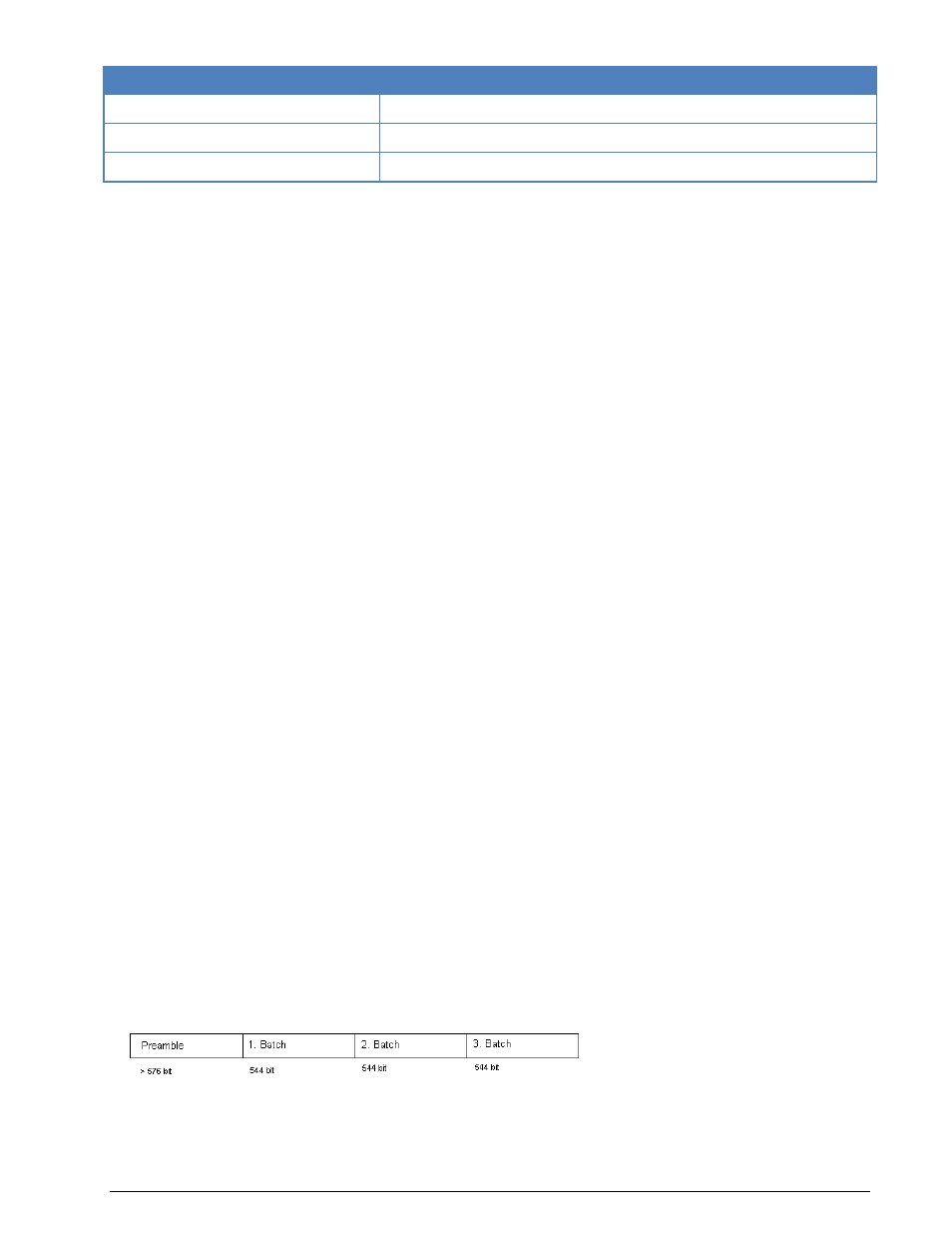Wavecom W61PC V7.5.0 User Manual
Page 210

200
Transmission Modes
WAVECOM Decoder W61PC/LAN Manual V7.5
Parameter
Value
Receiver settings
FM BW = 15 kHz
Input format(s)
IF
Additional Info
ITA-5 with block coding, PAGER
POCSAG specifies four different call modes:
Tone only pagers (Mode 0 and 1)
The receiver can receive four different messages. The meaning of the four tones must be determined be-
forehand. The acoustic signal is supported by the display of the A, B, C or D messages on a small LCD dis-
play. All pagers must in principle have tone-only capability as a minimum.
Numeric pagers (Mode 2)
Individual parties receive their messages in the form of transmitted digits and some special characters. In
this way for example, the telephone number which the POCSAG subscriber is to call, can be relayed. Mes-
sages are displayed on the pager display and may be partially stored.
Alphanumeric pagers (Mode 3)
The pager type which is easiest to use, is the alphanumeric pager where the transmitted message is dis-
played on the pager display. Such messages may be up to 80 characters long.
A country-wide pager network is, like a mobile telephone service, subdivided into individual cells that are
each serviced by a base station.
Cells are fed with information in a time multiplex fashion i.e. messages are transmitted in cycles. This pre-
vents that areas falling in the overlap zone of adjacent cells, receive the same message simultaneously.
To prevent the condition that a base station only transmits for one third of the available time, stations are
usually equipped to handle four frequencies.
Selecting Options/Message Type enables the user to select the various pager modes for display:
1...3: ASCII Mode 1 – 3 in ASCII format
0: BIN
Mode 0 in binary format
0...3: ASCII Mode 0 – 3 in ASCII format
0...3: AUTO Mode 0 – 3 automatic format detection
3: ASCII
Mode 3 in ASCII format
Data modulation is achieved by direct 2FSK carrier keying with a transmission speed of 512 bit/s. Newer
nets operate at 1200 or 2400 bit/s using FFSK modulation.
For reasons of compatibility with older pagers two different bit rates (512 Bit/s and 1200 Bit/s or 1200
Bit/s and 2400 Bit/s) are often used on the same frequency. In some countries POCSAG and GOLAY sys-
tems are on the same frequency. By selecting the Auto speed function all baud rates are automatically
detected and switch-over between 512, 1200 and 2400 bps is performed.
POCSAG Signaling
Generally activation of the HF carrier is followed by the transmission of a preamble or bit synchronization
pattern which slaves the receiver to the clock frequency. The preamble contains at least 576 bits and rep-
resents a continuously alternating sequence of 010101...0101. Following the preamble, data batches con-
taining the actual information are transmitted, each batch being 17 x 32 bit or 544 bits long.
The structure of a batch is fixed: Each batch starts with a 32 bit synchronization codeword with a fixed
content.